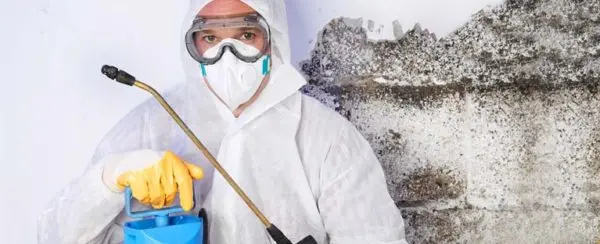Mold can be a hidden invader in your home, often thriving in dark, damp areas. While it might appear harmless initially, mold exposure can cause serious health problems for you and your family. Recognizing the symptoms of a moldy home is vital to maintaining a safe and healthy living environment. If you suspect mold growth behind your walls or under your floors, scheduling professional mold testing is a crucial step to safeguard your home. This guide will help you identify key signs of mold, explain the testing process, and outline the essential actions to take if mold is detected. Start your journey to a healthier home today!
Symptoms of a Moldy Home
Mold often reveals itself through subtle signs rather than obvious outbreaks. One of the most common indicators is a persistent musty or earthy odor that you can’t seem to eliminate. If this smell lingers without an identifiable source, mold could be present nearby.
Health symptoms such as frequent headaches, coughing, sneezing, or respiratory issues could also point to mold exposure, especially if these symptoms worsen when you are indoors. Increased allergy-like reactions, including itchy eyes or nasal congestion, often signal the presence of airborne mold spores.
Visually inspect your home’s walls, ceilings, and hidden corners for discoloration or dark spots, often black or greenish spots. In moisture-prone areas like bathrooms and kitchens, peeling paint, warped drywall, or staining are strong clues mold is growing behind the surfaces.
How Mold Testing Is Done
Mold testing begins with a thorough visual assessment by certified professionals, who check for visible mold growth and areas with high moisture levels such as basements, crawl spaces, bathrooms, and kitchens.
When mold signs are detected, the next step involves collecting air samples using specialized devices. These samples are sent to accredited laboratories to identify the type and concentration of mold spores present in different rooms.
In addition to air sampling, surface testing is conducted by swabbing or using tape lifts on suspicious areas to detect hidden mold colonies. In severe cases, bulk samples of materials like drywall, insulation, or carpeting may be taken to evaluate contamination depth.
Accurate mold testing provides valuable data, allowing remediation professionals to craft targeted strategies for safe and effective mold removal tailored to your specific situation.
What You Should Do After Mold Is Found
Discovering mold in your home is concerning, but prompt and informed action can restore safety and comfort. First, identify and eliminate moisture sources by fixing leaks, improving drainage, and enhancing ventilation to prevent mold from returning.
For small patchy mold areas, you may clean them safely yourself using appropriate protective equipment and cleaners designed specifically for mold removal mold removal. However, for larger infestations or hazardous molds such as toxic black mold, hiring a professional remediation company is highly recommended to ensure thorough and safe removal.
During remediation, maintain proper airflow by opening windows and running fans to reduce airborne spores. After cleanup, regularly inspect previously affected zones to ensure mold does not regrow.
If you or your family members continue experiencing health symptoms after mold remediation, consult a healthcare professional to address potential mold-related health impacts.
By addressing both mold removal and moisture control, you protect your home and loved ones from future mold issues, promoting lasting health and peace of mind.
Additionally, if you want to learn more about “Secrets of Clean Carpets,” please visit our “Cleaning” category for comprehensive guides and expert advice.
It’s important to recognize that mold growth is often a symptom of underlying moisture problems. Effective prevention combines regular home maintenance with vigilant moisture control measures such as installing dehumidifiers, repairing plumbing leaks promptly, and ensuring proper ventilation, especially in high-humidity areas. Homeowners should be proactive with routine inspections, particularly after adverse weather events or water damage, to catch early signs before mold takes hold. Early detection and prevention not only reduce health risks but also save significant costs related to extensive mold remediation. Educating yourself on mold prevention empowers you to maintain a safer, healthier home environment year-round.



